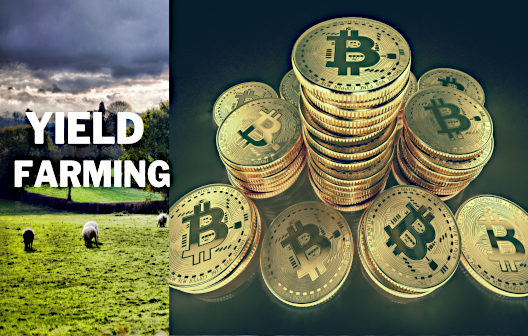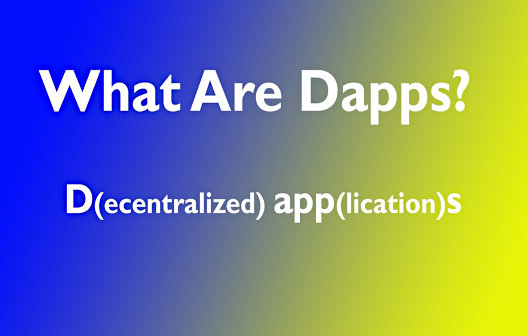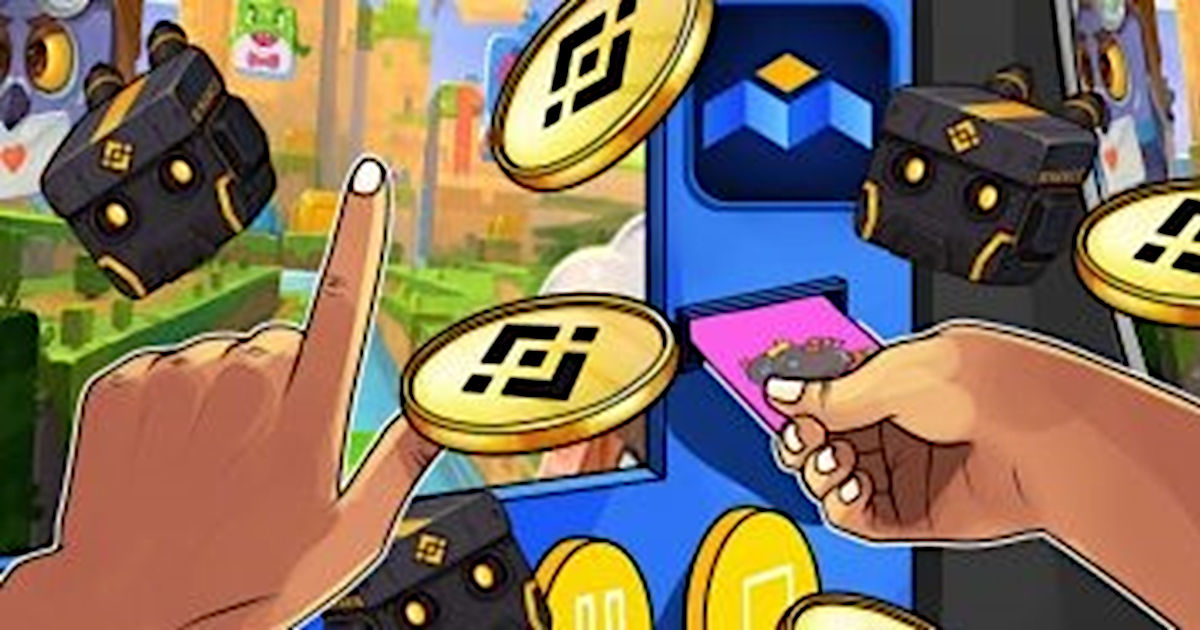GameFi? What is Play to Earn
GameFi, a hot new trend emerging from the crypto industry, combines decentralized finance (DeFi) and non-fungible tokens (NFTs) with blockchain-based online games.
Unlike many traditional online games operating on a “pay-to-win” model, allowing players to purchase upgrades to gain an advantage over other players, GameFi introduces a “play-to-earn” model. This concept involves giving players financial incentives to play and progress through games. In some cases, allowing gamers to earn a full-time income by doing so.
Alien Worlds and similar GameFi projects, along with other play-to-earn games, are disrupting the traditional gaming industry as we know it. These play-to-earn crypto games are fundamentally blockchain-based monetization of the gaming experience. What distinguishes them from traditional games is the players play to earn rewards rather than to win.
Predictably, the ability to financially reward players for their time and effort is behind the rapid growth in acceptance of these play-to-earn games, usually referred to as GameFi. Who wouldn’t like to earn cryptocurrency while having fun?
What Is GameFi?
A perfect combination between Gaming and Finance. GameFi, a very popular term in the cryptoverse, is a hybrid of “Gaming” and “Finance.” It describes the gamification of the working system creating profit from playing play-to-earn crypto games.
GameFi projects run on a blockchain’s distributed ledger. All objects in these GameFi games are expressed as NFTs – digital tokens used to prove ownership of limited intangible items. This enables players to have certifiable ownership of virtual items in the game. In contrast to traditional gaming, where users play to win, GameFi projects adopt a play-to-earn model. Consider items such as plots of land, avatars, costumes, weapons, and gold bars. When players find and accumulate items during gameplay, they have the option to trade these in digital marketplaces for different NFTs or sell them in exchange for cryptocurrency.
Depending on which game is played, users can increase their earning potential by dedicating time leveling-up and improving their characters, creating monetized structures on their land which other gamers pay to use or by competing against others in tournaments. To keep track of player ownership, all NFTs and cryptocurrency transaction data is stored on a public blockchain.
Some GameFi projects also include DeFi elements, stalking where players are able to lock away certain tokens to earn annual interest and other rewards. They’re also able to save to purchase other in-game items or unlock new game content.
The term “GameFi” was first used to describe this new trend by Yearn.Finance founder Andre Cronje in a September 2020 tweet. Since then, the term has been widely used to refer to video games embedded with blockchain-powered decentralized financial elements. These projects take advantage of the popularity of video games, combined with unique features of cryptocurrencies, to make GameFi an exciting and growing space.
How
Do GameFi Projects Work?
Different GameFi projects typically have a few commonalities. In-game items such as avatars, land, costumes, weapons, gold, tokens, and pets are represented as NFTs—non-fungible digital tokens that prove ownership of these digital objects. Game players acquire these items through gameplay and can trade them on NFT marketplaces for profit or exchange them for cryptocurrencies — which can in turn be exchanged for fiat money.
What You
Need to Play
To take part in any these play-to-earn games, users will need to do the following:
- Create
a cryptocurrency wallet: To store their virtual currency, NFTs and make in-game transactions. Which wallet you need will depend on which blockchain the game was built upon. For example, MetaMask – an Ethereum-based crypto wallet service – will work with any GameFi game built on Ethereum. - Purchase
starter items: All GameFi games are free to download. However, many require players to first purchase characters, native crypto tokens, decks of cards or upgrades to begin. - Pre-funded
crypto wallet: You will need to pre-fund your crypto wallet with a particular cryptocurrency to purchase starter items and proceed. Cryptoblades, for example, requires users to download MetaMask, purchase Binance coin (BNB) and exchange it for the game’s native cryptocurrency, SKILL.
How
Did GameFi Come Into Existence?
The emergence of GameFi comes from a combination of factors that dates back to 2017 and the emergence of the NFT phenomenon CryptoKitties. The digital collectibles economy proved a viral success, with CryptoKitties amassing over 14,914 users a day at its peak. CryptoPunks, a collection of 10,000 pixelated NFT characters also built on Ethereum, enjoyed similar success, surpassing $1 billion in sales and still growing.
Unfortunately, the success of these NFTs showed both the good and bad sides of the state of blockchain technology at the time. Games like CryptoKitties caused heavy congestion on the Ethereum network, leading to extreme spikes in transaction fees and much slower than normal transaction confirmation times. These technical issues highlighted a clear gap in the market for more efficient and scalable platforms that could handle the rising demand from online gamers and virtual asset collectors.
Since then, several new “Ethereum killer” blockchains have emerged, promising faster transaction speeds, greater scalability, and cheaper fees. These include the likes of Solana, Polkadot, and Cardano.
The increase of decentralized finance (DeFi) platforms over 2020 was the next significant component enabling GameFi’s growth, introducing a range of blockchain-native financial platforms that run entirely using smart contracts. This provided the infrastructure for decentralized exchanges where in-game cryptocurrencies could be launched from and traded, as well as additional features like lending and staking.
In September 2020, Yearn.finance founder and DeFi developer Andre Conje tweeted about the gamification of monetary policies in a decentralized environment. He recognized the many benefits DeFi and NFTs could bring to the online gaming industry, and GameFi applications quickly started to form. Axie Infinity was one of the first play-to-earn games to take off in a big way, surpassing $1 billion in revenue on Aug. 9, 2021.
GameFi
Expands its Reach
Early GameFi titles used the Bitcoin blockchain, but the cost of transactions and slow speed lead to the adoption of the smart contract-enabled blockchain network, Ethereum.Crypto. Game developers, despite its performance issue, due to limited block space frequently use Ethereum.
Naturally, a game that requires exorbitant fees for in-game transactions will have difficulty gaining a significant user base. Faced with this problem, some crypto game developers moved from Ethereum’s base layer to faster networks, such as Polkadot, Solana, Polygon, Wax and BSC.
GameFi projects have multiple levels to progress through. Players can increase earnings by dedicating time to improving their characters, monetizing their land assets through developing structures other players will pay to visit, or battling other players in tournaments.
All data is stored on a decentralized public blockchain, keeping track of all players’ ownership. This way players, not the game developers, own all the assets, providing them the ability to monetize those assets. Since players maintain ownership of their assets even if a server is turned off or the gaming company suffers technical downtime. Making crypto gaming an actual revenue-producing action for players.
Additional
GameFi Advantages
DeFi concepts like staking, liquidity mining and yield farming are gaining a traction in GameFi projects. These are additional ways players can earn in-game passive income.
Staking their in-game assets, is a way players can earn annual interest and other rewards, which can be used to unlock new levels or to buy additional in-game items. Also, players can secure loans by collateralizing their game assets.
Unlike traditional game development, which is centralized, GameFi projects may involve users in decision-making. Some games let players decide future game updates by giving stakeholders voting power, of the GameFi DAO (Decentralized Autonomous Organization).
A DAO allows token holders to vote on and suggest project updates, making GameFi truly participatory. These proposals usually have a financial impact, such as members of the DAO voting to increase the reward for a particular in-game action.
You must own a project’s governance token to be a member of the GameFi DAO. Typically, your voting power is directly proportional to the number of tokens you hold.
GameFi’s
New Concept “Play-to-Earn”
The play-to-earn model characteristic of GameFi projects is groundbreaking. Traditional online games make money through in-app purchases, affiliate marketing and advertising. As a player, you spend money buying in-game items to help you win or get an edge over other players. Of course, that spending goes directly to the game operators.
Also, if you’re like most players who grew up with online video game staples like Minecraft and PlayerUnknown’s Battlegrounds, you’ll be a custom to highly desirable in-game coins that have no value outside the game environment. Apart from the entertainment, you get nothing in return for your time and effort dedicated to playing these online games. With play to earn that has all changed.
This is where play-to-earn crypto games perform a 180 on the gaming industry: allowing gamers to add real-world value to their in-game purchases. In-game items and products are now NFT’s stored on a blockchain running on a crypto network. This blockchain technology allows in-game tokens and items to be traded for cryptocurrencies and, ultimately, actual cash.
To heighten the gaming experience, online game players buy items like coins, weapons, extra lives, custom characters, outfits, avatars, accessories, etc., directly from the game. Traditional gameplay involves buying assets from stores owned by the game developers, enriching the developers and not the players. This can limit players’ online gaming experience, especially those who don’t have much cash to spend, resulting in a cost to play the games. On the other hand, with crypto gaming, these purchases are made with cryptocurrencies and often involve trading valuable assets amongst players, providing the opportunity to go from a cost to the player to a revenue generation proposition for the gamer.
This is a striking difference for the decentralized operations of GameFi projects, where players own globally distributed digital assets that aren’t limited to gaming purposes.
Minimal
or Zero Upfront Cost
Most GameFi games are free to download and play, which makes them more accessible than traditional games. While there are no upfront costs, some games may require you to purchase the in-game tokens, avatars, and other items to get started.
Easy-to-Learn
Games
GameFi projects incorporate simple gameplay mechanisms, an aspect that makes them easy to understand and navigate. This simple approach lowers the barrier to entry, driving considerable increase of potential players of all ages and experience levels can comfortably participate.
Future
Growth
Although GameFi’s origin can be traced to the early development of cryptocurrencies, it’s only recently gaining mainstream adoption. Demonstrated by the growth of the massive success of Axie Infinity. The popular GameFi project became the first to surpass $1 billion in token sales in August 2021 and has seen over a million daily active players.
The constantly evolving technology behind crypto gaming has advanced to a level where new GameFi projects are attracting massive players & fan bases, as well as institutional funding. Industry experts believe crypto gaming to be the most likely gateway for widespread adoption and use of blockchain technology. As GameFi projects gain popularity with traditional gamers, understanding of crypto can only continue to flourish.
As you might expect, GameFi is increasingly taking up large piece of the growing $175 billion gaming market. Video gamers have long enjoyed and familiarized themselves with the concepts of in-game currencies, limited digital items and tokenization, all without gaining monetary value. Unquestionably, there will be a greater appeal to GameFi projects that comprise all these elements while directly rewarding players financially.
These are exciting times for GameFi. Leading industry players, such as game studios Ubisoft, Roblox Corporation and semiconductor makers, are part of the Blockchain Game
To further the growth of GameFI, an alliance is needed to provide infrastructure for game development, and forums for developers and players to network, collaborate and share knowledge, in addition to creating common standards.
GameFi is rapidly growing, and the collective market capitalization of leading blockchain games has topped $14 billion. But given the massive size of the gaming industry, the total addressable market offers even greater opportunities for growth.
With the runaway success of crypto games like Axie Infinity and CropBytes, the future of GameFi seems bright. With many more GameFi games in the works, newer innovations are expected. Some of the crypto gaming projects currently under development include:
- Star Atlas
- Ember Sword
- Guild of Guardians
- The Sandbox
- Who: Worlds Apart
These newer games will provide even more opportunities for gamified profit and a feature-rich gaming experience.
Gaming platforms like MOBOX are being designed to allow individuals to build their own NFTs and games with interoperability capabilities. The platform also features DeFi functionalities such as staking and liquidity pools, enabling gamers to generate income from their assets. This income can then be used to buy in-game upgrades or generate keys to unlock new NFTs.
Bottomline
GameFi has already gained significant traction, with the collective market capitalization of top games breaking $14 billion. But key opinion leaders in the crypto industry believe there’s a lot more ahead for this new sector, with Tron founder Justin Sun recently stating he believes this new sector will be key to increasing cryptocurrency adoption.
The GameFi concept is clearly an improvement over existing online game. The play-to-earn structure is ultimately the passport to broader crypto adoption as blockchain and NFT games suggest the future of the industry. It’s not surprising, this explosive trend shows no signs of slowing down. At this rate, GameFi and NFTs will become a rallying point for DeFi. With growing public interest and an influx of capital, prospects for this promising industry are limitless.
About the Author:
Peter Spoleti is CEO of Vertex Markets. Vertex uses AI to make B2B introductions providing a business
networking site free from guesswork as to where the most valuable business
interactions are found.
Contact Vertex Markets here.
Suggested Reading:
 What Is Yield Farming and Why All the Hype?
|
 Blockchain Smart Contract Applications
|
 Decentralized Apps Using Blockchain to Change the Internet
|
 The Benefits of DeFi
|
Stay up to date. Follow us:

|
